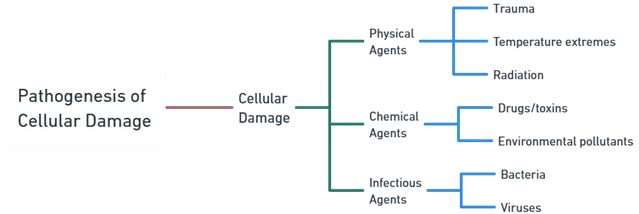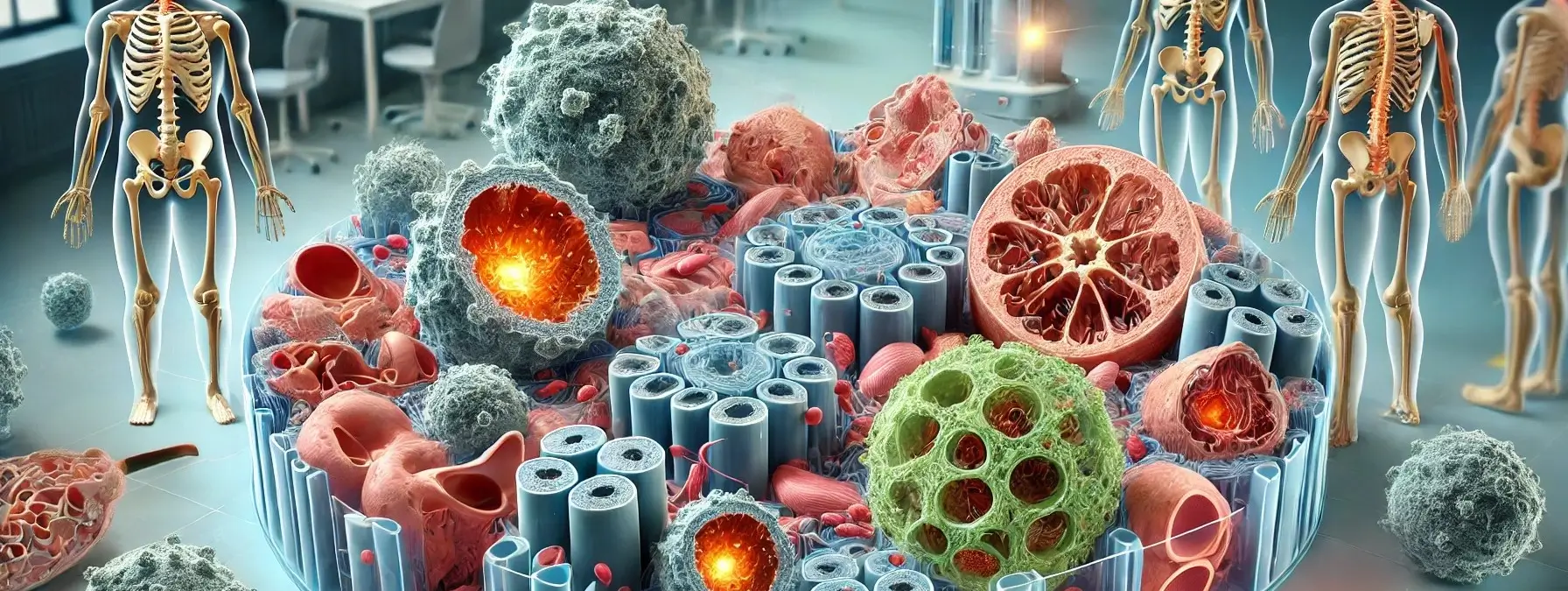- Cellular damage occurs when various factors disrupt the normal functioning of cellular components, such as cell membranes, mitochondria, ribosomes, and nuclei.
- Understanding the pathogenesis of this damage is crucial to comprehending how cells respond to stressors and how injury can lead to cell dysfunction or death.

This is a sample ad placement!
Cell Membrane Damage
- Cellular damage cell membrane is a critical structure responsible for maintaining cellular integrity, regulating the passage of molecules in and out of the cell, and facilitating communication with other cells.
- Damage to the cell membrane can result from:
- Oxidative Stress: Reactive oxygen species (ROS) can cause lipid peroxidation, altering the membrane’s fluidity and permeability.
- Toxins or Pathogens: Certain bacterial toxins or viral infections can disrupt the cell membrane’s integrity.
- Mechanical Trauma: Physical forces can cause membrane damage, leading to cell leakage or rupture.
Consequences:
- Loss of selective permeability.
- Impaired cellular communication.
- Uncontrolled influx of ions and molecules, leading to cell dysfunction or death.
This is a sample ad placement!
Mitochondrial Damage
- Mitochondria are the cell’s energy-producing organelles, generating ATP through oxidative phosphorylation.
- Mitochondrial damage can be caused by:
- Hypoxia: Insufficient oxygen impairs the electron transport chain, reducing ATP production and causing the formation of ROS.
- Toxins or Drugs: Some chemicals or medications can damage mitochondrial DNA, inhibit enzymes involved in ATP production, or increase ROS production.
- Genetic Mutations: Inherited mitochondrial disorders can lead to impaired energy production or increased susceptibility to damage.
Consequences:
- Reduced ATP production.
- Increased ROS generation.
- Release of pro-apoptotic factors, which can lead to cell dysfunction or apoptosis.
This is a sample ad placement!
Ribosome Damage
- Ribosomes are responsible for protein synthesis, translating mRNA into polypeptides.
- Ribosome damage can be caused by:
- Toxins: Certain toxins, like those produced by some bacteria, can inhibit ribosomal function.
- Oxidative Stress: ROS can damage ribosomal RNA or proteins, impairing ribosome function.
- Nutrient Deprivation: Insufficient amino acids or energy can impair ribosomal function and protein synthesis.
Consequences:
- Reduced protein synthesis.
- Production of misfolded proteins.
- Impaired cellular function, resulting in cell injury or death.
Nuclear Damage
- The nucleus contains the cell’s genetic material (DNA) and is responsible for controlling gene expression and regulating cellular processes.
- Nuclear damage can result from:
- DNA-Damaging Agents: Ionizing radiation, chemicals, or ROS can cause DNA lesions, such as base modifications, cross-links, or strand breaks.
- Replication Errors: Errors during DNA replication can introduce mutations or genomic instability.
- Chromosomal Abnormalities: Structural or numerical chromosomal alterations can disrupt gene function or regulation.
This is a sample ad placement!
Consequences:
- Impaired gene expression and altered cellular processes.
- Genomic instability and increased risk of malignant transformation.
- Cells have DNA repair mechanisms, but if these fail or become overwhelmed, cell dysfunction or death (apoptosis or necrosis) may occur.
Thank you for reading from Firsthope's notes, don't forget to check YouTube videos!

